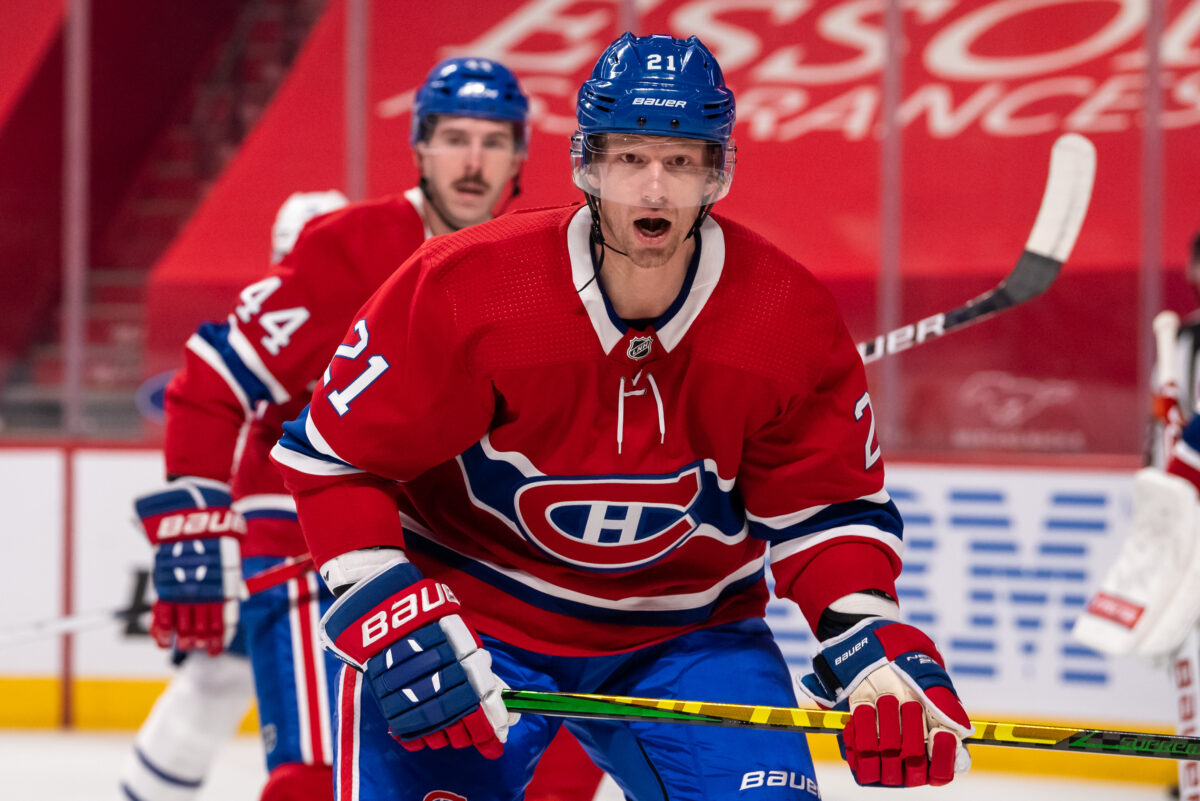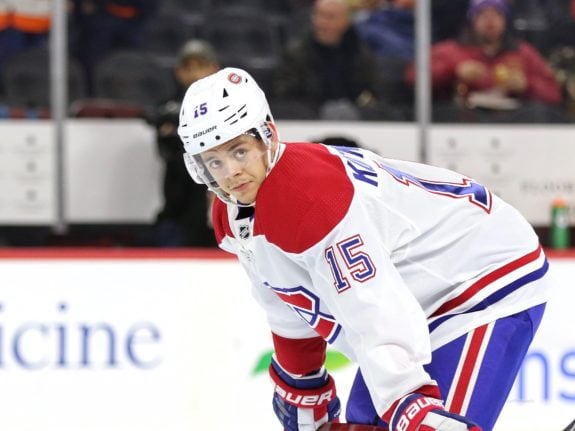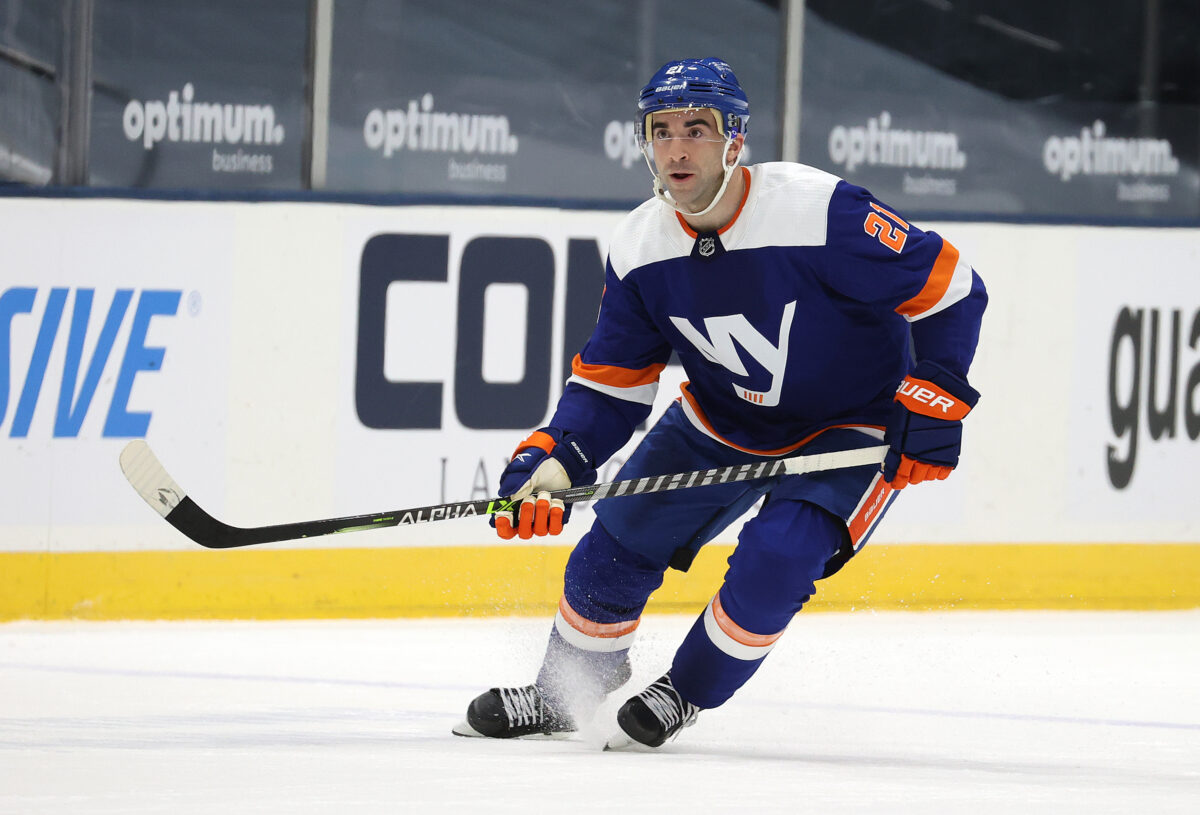The 2021 Trade Deadline was exceptionally volatile, as contenders scrambled to acquire talent to hopefully extend their run and lottery teams strived to maximize their return on pieces they would likely lose to free agency just a few months later. The Anthony Mantha trade that saw him head to Washington headlined the final day of the transfer season. Still, most teams in the middle of the pack completed relatively safe transactions, not giving up much but only receiving complimentary rental pieces in return.
However, a trade does not start and end with the transaction; so many factors distinguish a good trade from a bad one, and it is often only with years of hindsight that one can determine a clear victor. Trade deadline acquisitions specifically have an added risk of failure due to two factors, which we will analyze using two case studies: the Eric Staal trade to the Montreal Canadiens and the acquisition of Travis Zajac and Kyle Palmieri by the New York Islanders.
Exhibit A: Eric Staal – Stalling Youth Development
When the Canadiens traded a third- and fifth-round pick to the Buffalo Sabres for 36-year-old Eric Staal on March 26th, two weeks before the deadline, it was done to add depth to the team and create a roster capable of offering good resistance on each line. Staal’s experience, leadership and faceoff abilities were quick to be lauded by the Canadiens’ front office, and he was immediately placed in the lineup, never to be removed again.

Since his addition to the Habs’ roster, however, the team has the eighth-worst points percentage in the NHL, with an 8-12-1 record in 21 games, and Staal has a meager three points in that span. He seems to have misplaced some of the first-line center qualities he showed in Minnesota just last year when he picked up 47 points in 66 games. His half-season in Buffalo seems to have depleted his reserves and turned a once-dominant, two-way center with decent goal-scoring abilities into a sub-replacement level fourth-line forward.
Latest THW Content:
- Oilers’ Skinner in Line for Vezina Trophy Winning Season
- Colorado Avalanche Won’t Be Contenders This Season
- Oilers: 8 GMs Who Would’ve Been Better Hires Than Stan Bowman
The individual woes of Staal are not the most troubling aspect of his acquisition; since he has joined the team, he has been placed in all sorts of positions to succeed, including power-play ice time that he is still being provided today – he has played more minutes than young center Nick Suzuki twice and more than Jesperi Kotkaniemi on five occasions since his arrival. This comes especially to the detriment of the 21-year-old Kotkaniemi, who is playing in his third NHL season and attempting to carve out a top-six role on the team. Since the beginning of the 2020-21 NHL season, Kotkaniemi has seen a total of 17 different linemate combinations, and this number was much lower prior to Staal’s acquisition.

Kotkaniemi has not only seen a carousel of wingers at his side this year but has also obtained less ice-time in general, spending as little as nine minutes on the ice some nights. He also was benched at essential moments – if there was an important powerplay, a one-goal lead, or an empty net with a minute left, Staal was often seen on the ice at some point, but the young center would often sit out the final two to four minutes of the game. As a result, Kotkaniemi is being put in a position where he cannot learn how to take over an NHL game and be a difference-maker on both sides of the puck. Instead, in a key moment in his development, the Canadiens handed these responsibilities to a freshly-acquired veteran who has not shown anything to earn them as of yet.
Exhibit B: Zajac, Palmieri – Breaking ongoing chemistry
When the New Jersey Devils traded Palmieri and Zajac in a deal involving a first-round pick, both fanbases and organizations were satisfied with the cost and return of the trade. The Devils obtained an extra selection in the 2021 NHL Draft to deepen their rebuild foundations. The Islanders obtained two key pieces that should help them carry their success into the final third of the season and maintain their home-ice advantage in the MassMutual East Division.

What followed, however, was a slide in the standings that resulted in the Islanders currently holding the fourth and final playoff spot in the East, as the next 17 games after the two joined the team ended with a 7-7-3 record. When they initially entered the lineup, they were placed side-by-side on the third line, with Josh Bailey as their left winger. As the post-deadline season went on and the Islanders could not put together two wins, Palmieri and Zajac started moving around; the former was especially worked around the lineup, never truly sticking to any line and finishing that 17-game span with a total of two goals and two assists. Zajac, for his part, only dressed for 13 games and obtained three points.
Their arrival also shifted around Ross Johnston, Kieffer Bellows, Michael Dal Colle and Leo Komarov, who were mostly holding up the bottom-six of the Isles quite nicely. Most of them are also in their development years and were learning how to play the Barry Trotz way until Zajac and Palmieri stepped into the lineup, learning everything from scratch after playing a specific way for five years in Palmieri’s case and an entire career in Zajac’s case.
When teams break their momentum with trades for assets that will often hit the unrestricted free agent market at their first opportunity, it slows their stride heading into the playoffs – and often, the difference between a win and a loss in the playoffs is the player understanding your system perfectly and executing it thoughtlessly, and not being off-beat in the slightest. Zajac and Palmieri are NHL players and will adapt quickly, but they would have been better off in a longer season or having simply been traded for before the deadline to be able to adapt to their new hockey team’s way of playing.
What did you think of this article? Do you have a favorite trade deadline acquisition? How does your team usually do around deadline day? Let us know down below!